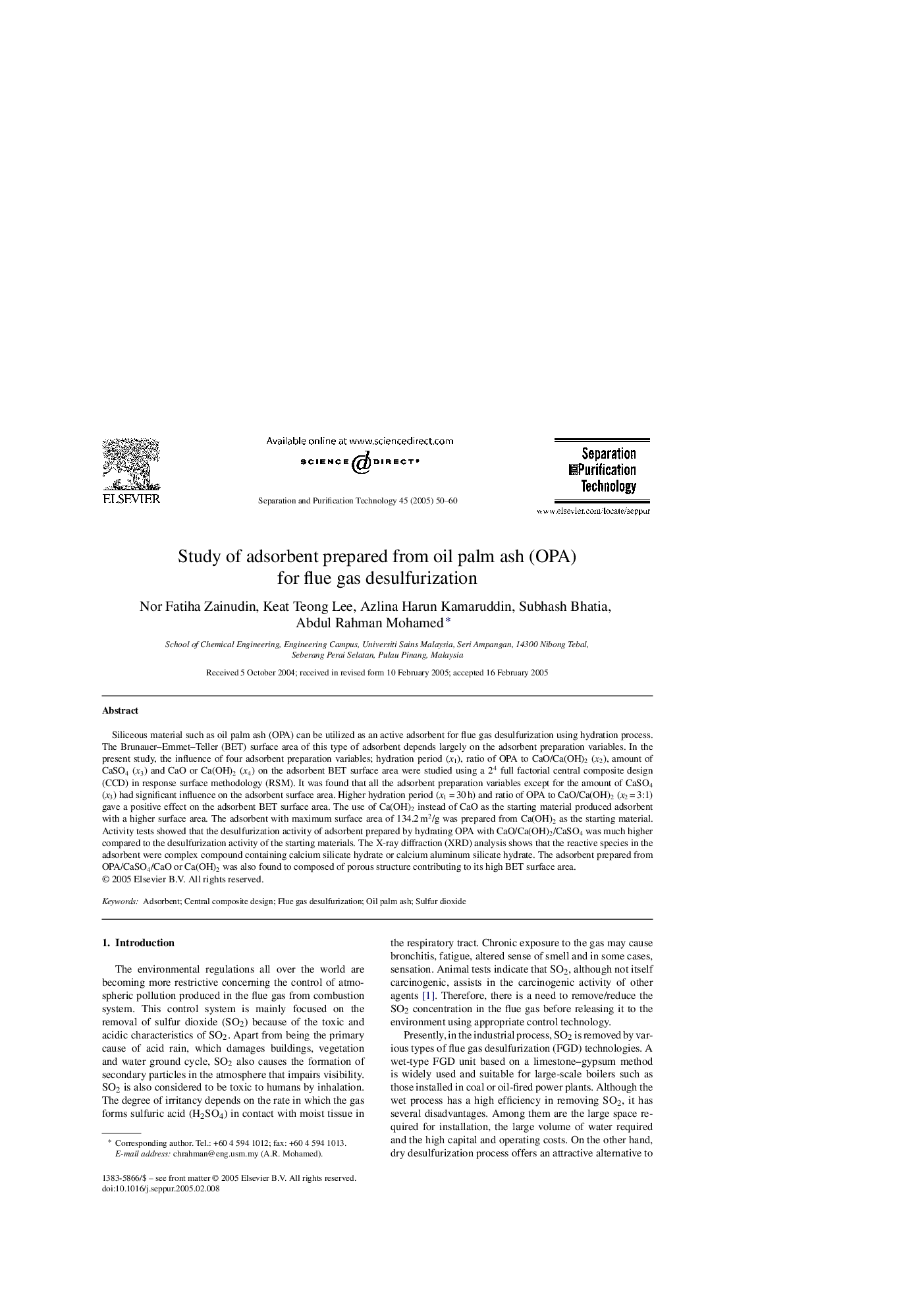| Article ID | Journal | Published Year | Pages | File Type |
|---|---|---|---|---|
| 10389818 | Separation and Purification Technology | 2005 | 11 Pages |
Abstract
Siliceous material such as oil palm ash (OPA) can be utilized as an active adsorbent for flue gas desulfurization using hydration process. The Brunauer-Emmet-Teller (BET) surface area of this type of adsorbent depends largely on the adsorbent preparation variables. In the present study, the influence of four adsorbent preparation variables; hydration period (x1), ratio of OPA to CaO/Ca(OH)2 (x2), amount of CaSO4 (x3) and CaO or Ca(OH)2 (x4) on the adsorbent BET surface area were studied using a 24 full factorial central composite design (CCD) in response surface methodology (RSM). It was found that all the adsorbent preparation variables except for the amount of CaSO4 (x3) had significant influence on the adsorbent surface area. Higher hydration period (x1Â =Â 30Â h) and ratio of OPA to CaO/Ca(OH)2 (x2Â =Â 3:1) gave a positive effect on the adsorbent BET surface area. The use of Ca(OH)2 instead of CaO as the starting material produced adsorbent with a higher surface area. The adsorbent with maximum surface area of 134.2Â m2/g was prepared from Ca(OH)2 as the starting material. Activity tests showed that the desulfurization activity of adsorbent prepared by hydrating OPA with CaO/Ca(OH)2/CaSO4 was much higher compared to the desulfurization activity of the starting materials. The X-ray diffraction (XRD) analysis shows that the reactive species in the adsorbent were complex compound containing calcium silicate hydrate or calcium aluminum silicate hydrate. The adsorbent prepared from OPA/CaSO4/CaO or Ca(OH)2 was also found to composed of porous structure contributing to its high BET surface area.
Related Topics
Physical Sciences and Engineering
Chemical Engineering
Filtration and Separation
Authors
Nor Fatiha Zainudin, Keat Teong Lee, Azlina Harun Kamaruddin, Subhash Bhatia, Abdul Rahman Mohamed,
